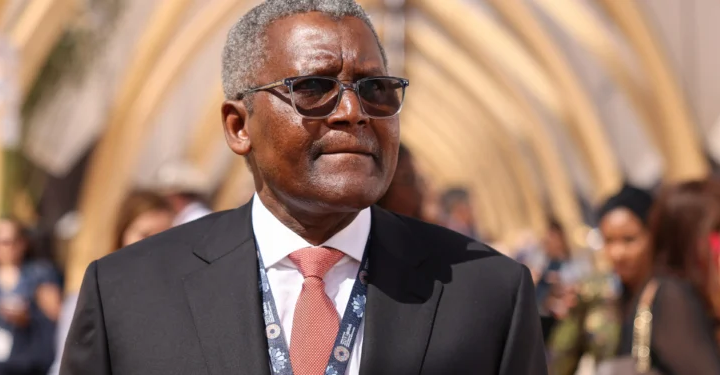Nigeria’s Debt Burden: States Struggle to Stay Afloat
As of June 2024, Nigeria’s debt continues to rise, creating financial challenges for states across the nation. Debt Management Office (DMO) data shows that the total debt owed by Nigeria’s 36 states now stands at an alarming ₦11.47 trillion. This figure marks a 14.57% increase since December 2023, which recorded a ₦10.01 trillion debt.
“Many states are on the brink of financial collapse,” remarked Dr. Adamu Garba, an economic analyst. “Without immediate intervention and economic reforms, Nigeria’s debt could severely strain states’ development and welfare.”
Join our WhatsApp ChannelThe report also highlights that the external debt for states and the Federal Capital Territory (FCT) increased from $4.61 billion to $4.89 billion during the same period, primarily driven by the naira’s devaluation. In local currency, debt climbed by 73.46%, a result of the naira’s fall from ₦899 per dollar in December 2023 to ₦1,470 per dollar by mid-2024. Surprisingly, however, domestic debt for states and the FCT dropped from ₦5.86 trillion to ₦4.27 trillion.
Reliance on FAAC Allocation: A Growing Concern
The debt report, alongside BudgIT’s 2024 State of States report, paints a worrying picture of the reliance on federal allocations. In 2023, 32 of the 36 states relied on allocations from the Federal Accounts Allocation Committee (FAAC) for at least 55% of their revenue. Lagos and Ogun were among the few states that relied less on federal funds, with their internally generated revenue (IGR) helping them maintain some financial independence.
BudgIT’s report notes that 14 states depended on FAAC for over 70% of their total income, reflecting an over-reliance on federally distributed revenue, especially in regions that struggle to generate internal revenue.
“It’s risky,” said financial expert Chike Amadi. “States’ dependence on FAAC makes them vulnerable to shocks in the crude oil market, which largely funds these federal allocations. They are not building sustainable sources of revenue.”
Revenue Trends and Declining Self-Sufficiency
Amid rising debt, revenue trends show mixed results. According to BudgIT’s findings, combined revenue for all 36 states saw a significant increase of 31.2%, from ₦6.6 trillion in 2022 to ₦8.66 trillion in 2023. Gross FAAC allocations accounted for 65% of the revenue growth, climbing by 33.19% from ₦4.05 trillion in 2022 to ₦5.4 trillion in 2023. However, the increase did not translate to improved self-sufficiency.
Internally Generated Revenue (IGR) in the states increased modestly by 20.33%, rising from ₦1.82 trillion in 2022 to ₦2.19 trillion in 2023. While this reflects efforts by some states to improve local revenue collection, only six states achieved over 50% growth, with Zamfara leading the way at a 240% increase. Despite this, seven states experienced negative IGR growth, with Jigawa recording the largest decline.
READ ALSO: MTN Nigeria Debt Set To Rise, As SEC Approves New N100 billion Loan
States Caught in a Debt Trap
The combined debt figures show that only Lagos and Rivers states can generate enough IGR to meet their operating costs without relying on FAAC allocations. Lagos recorded the highest IGR-to-operating-cost ratio of 118.39%, closely followed by Rivers at 121.26%. Meanwhile, many other states continue to struggle. Akwa Ibom, Bayelsa, and Taraba, for example, need over five times their IGR to cover basic operational costs, highlighting the widening gap between revenue generation and expenditure.
“It’s like a debt trap,” commented BudgIT spokesperson Femi Olaleye. “Many states cannot break free without federal aid or a significant increase in their revenue streams. If FAAC allocations were to decrease, the impact would be catastrophic.”
Recommendations for Financial Sustainability
To address the Nigeria debt crisis, BudgIT has put forth several recommendations, encouraging states to strengthen their internal revenue bases and reduce dependency on federal allocations. BudgIT’s advice centers on leveraging natural resources, digitalizing revenue collection, improving ease of doing business, and ensuring compliance with tax requirements.
“The states have resources; they just need to manage them better,” said Olaleye. “Adopting digital tax systems, eliminating cash-based transactions, and operationalizing treasury single accounts would all contribute to a more transparent and efficient revenue collection process.”
The report suggests other measures, such as deploying tax intelligence to identify and manage high net-worth individuals and entities, particularly in states where local resources remain untapped.
Building Fiscal Resilience
BudgIT’s report indicates that long-term fiscal sustainability for Nigeria’s states lies in adopting reforms that promote financial independence. Experts believe that states need to establish partnerships with private firms, leverage technology, and invest in human capital to unlock sustainable revenue streams.
Dr. Garba believes there’s an urgent need for states to embrace self-sustaining strategies. “Debt isn’t inherently bad if it’s used for development,” he explained. “But when states keep borrowing without growing their revenue base, they become financially unstable.”
For now, the future of state debt in Nigeria remains a major concern. With growing debt figures, fluctuating revenue, and over-reliance on federal funds, Nigeria’s state governments must make bold changes to ensure long-term sustainability.
Emmanuel Ochayi is a journalist. He is a graduate of the University of Lagos, School of first choice and the nations pride. Emmanuel is keen on exploring writing angles in different areas, including Business, climate change, politics, Education, and others.



















Follow Us